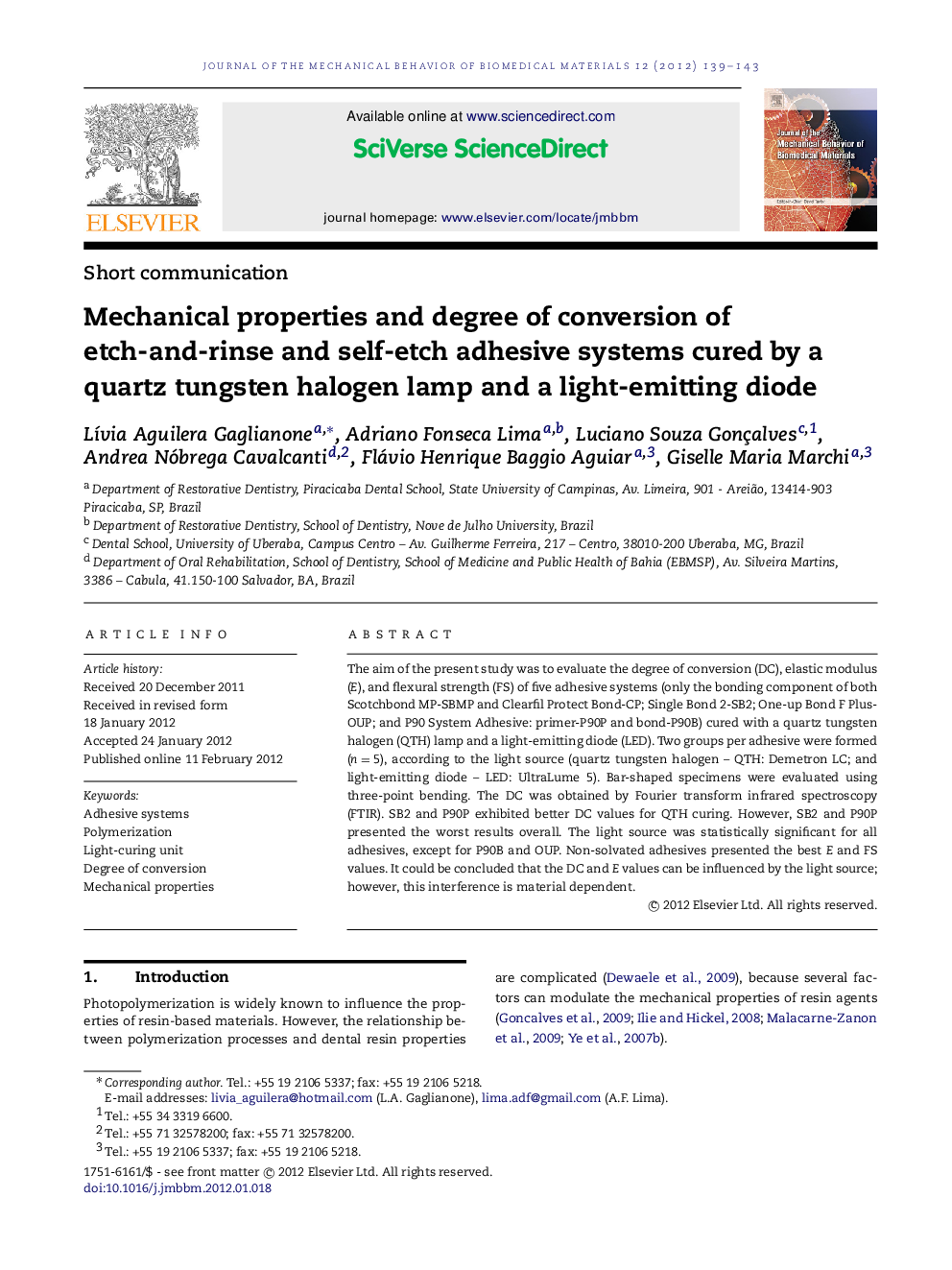| Article ID | Journal | Published Year | Pages | File Type |
|---|---|---|---|---|
| 7209449 | Journal of the Mechanical Behavior of Biomedical Materials | 2012 | 5 Pages |
Abstract
The aim of the present study was to evaluate the degree of conversion (DC), elastic modulus (E), and flexural strength (FS) of five adhesive systems (only the bonding component of both Scotchbond MP-SBMP and Clearfil Protect Bond-CP; Single Bond 2-SB2; One-up Bond F Plus-OUP; and P90 System Adhesive: primer-P90P and bond-P90B) cured with a quartz tungsten halogen (QTH) lamp and a light-emitting diode (LED). Two groups per adhesive were formed (n=5), according to the light source (quartz tungsten halogen-QTH: Demetron LC; and light-emitting diode-LED: UltraLume 5). Bar-shaped specimens were evaluated using three-point bending. The DC was obtained by Fourier transform infrared spectroscopy (FTIR). SB2 and P90P exhibited better DC values for QTH curing. However, SB2 and P90P presented the worst results overall. The light source was statistically significant for all adhesives, except for P90B and OUP. Non-solvated adhesives presented the best E and FS values. It could be concluded that the DC and E values can be influenced by the light source; however, this interference is material dependent.
Related Topics
Physical Sciences and Engineering
Engineering
Biomedical Engineering
Authors
LÃvia Aguilera Gaglianone, Adriano Fonseca Lima, Luciano Souza Gonçalves, Andrea Nóbrega Cavalcanti, Flávio Henrique Baggio Aguiar, Giselle Maria Marchi,
